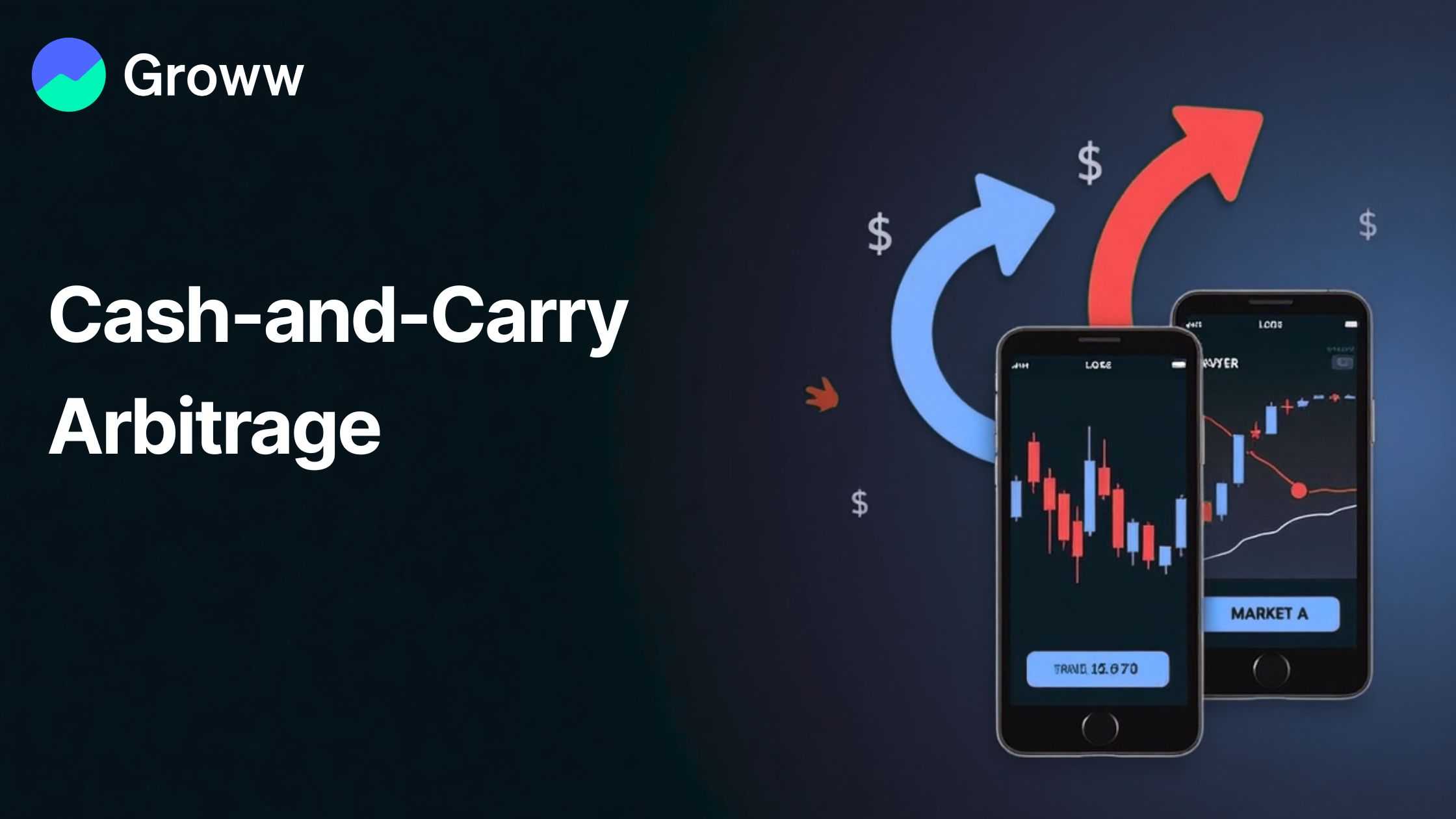What is Cash-and-Carry Arbitrage

Cash-and-carry arbitrage refers to the trading strategy where the price difference between the spot market and futures market of an underlying asset is exploited to lock in a risk-free profit. Arbitrage traders employ this strategy when the futures price is trading above the fair value relative to the spot price and carrying cost. Let's take a closer look at the cash-and-carry arbitrage strategy and explore how you can implement the same.
Arbitrage in Commodities
Similar to any financial market, the commodity market also strives to be efficient by factoring in all the available information into the price of a commodity. However, there might be several reasons why pricing inefficiencies may arise.
An arbitrage trader aims to exploit these pricing discrepancies and profit from them, which in turn leads to prices stabilising and creating a more efficient market.
For example, if a commodity is noted to be trading higher in one market and lower in another, the arbitrage trader will look to sell the commodity in the market where it is trading higher and buy it in the market where it is trading lower. Over time, the prices would equalise, allowing the trader to pocket the difference.
Some common arbitrage strategies include:
- Spatial arbitrage: Aims to exploit the price differences of an asset in markets located in different geographical locations
- Calendar arbitrage: Benefits from the price difference in derivative contracts of the same asset with different expiry dates
- Temporal arbitrage: Aims to arbitrage over time by purchasing an asset with an expectation that the price will increase in the short term or selling with an expectation of a price decline
- Statistical arbitrage: Uses advanced mathematical models and algorithms to exploit pricing inefficiencies across markets or securities
Traders also deploy strategies such as the cash-and-carry or reverse cash-and-carry arbitrage strategies that benefit from the difference between the spot price and the price of the futures contract.
What is Cash-and-Carry Arbitrage?
Let’s take a closer look at the cash-and-carry arbitrage strategy.
When trading commodities, traders often utilise derivative contracts such as futures and options. Traders deploy the cash-and-carry strategy in situations where the price of a futures contract is trading at a premium compared to the spot price and the carrying costs of the commodity.
The objective of this strategy is to lock in a risk-free profit by exploiting the price differences between the spot and futures markets. To execute this strategy, a market condition known as Contango should be met in which the spot price is lower than the price of the futures contract.
To execute this strategy, a trader will purchase the commodity or go long in the spot market. Simultaneously, the trader will create a short position in the futures contract of the same asset.
Cash-and-Carry: Step-by-Step Mechanism
The first step of the cash-and-carry arbitrage strategy involves purchasing the commodity from the spot market.
Once the commodity is purchased from the spot market, the trader is required to take delivery of the commodity and physically store it. The costs associated with this are known as carrying costs.
The trader is also required to sell a futures contract of the same commodity. It is important that the futures contract is trading at a higher price than the spot price.
Upon expiry, the trader can deliver the commodity and fulfil the futures contract. This allows the trader to cover the short position and lock in a risk-free profit.
The Math Behind a Cash-and-Carry Strategy
In a cash-and-carry strategy, a trader aims to profit from the pricing inefficiencies between the spot market and the futures market of a commodity. A trader can book a profit if the futures price is higher than the spot price and the carrying costs of the commodity.
Profit = (Futures Price – Spot Price) – Carrying Costs
Let’s consider the following example-
The spot price of crude oil is ₹5,000 while the futures contracts of crude oil are trading at ₹5,500. To execute a cash-and-carry strategy, the trader purchases the commodity in the spot market and sells the futures contract of the same commodity. To store the commodity, the trader incurs carrying costs of ₹100. Upon expiry, the trader delivers the commodity and fulfils the futures contract.
Profit = (₹5,500 – ₹5,000) – ₹100 = ₹400
What are Carrying Costs?
Carrying costs refer to the expenses incurred when physically delivering a commodity. This can include various costs such as storage fees, insurance premiums, logistics costs, or financing and interest costs.
The carrying costs of a commodity depend on several factors such as the perishability of the commodity and the quantity in which the commodity is purchased. The price volatility of the commodity may also impact insurance and financing costs.
Market Conditions for Cash-and-Carry
There are several market conditions that need to be met in order to successfully execute a cash-and-carry arbitrage strategy.
- The futures premiums should trade at a higher level than the spot price of the commodity. The condition known as Contango is essential for a cash-and-carry strategy.
- The carrying costs, such as storage and financing costs, should be low. Lower carrying costs can help pocket a larger chunk of the difference between the spot price and futures contracts.
- There should be sufficient time for the futures contracts to mature, allowing traders to successfully arbitrage and earn a profit.
Risks and Limitations
Just like any other strategy, it is crucial to understand the associated risks and limitations of the cash-and-carry strategy.
- One of the key risks associated with the cash-and-carry arbitrage strategy is the basis risk. The strategy could fail if the price of the futures contracts and the spot price do not converge as expected.
- Another major limitation of the strategy is the carrying costs. These costs can vary depending on the commodity, and if the costs are high, there won’t be a big enough gap between the spot price and futures contracts, resulting in a lower profit.